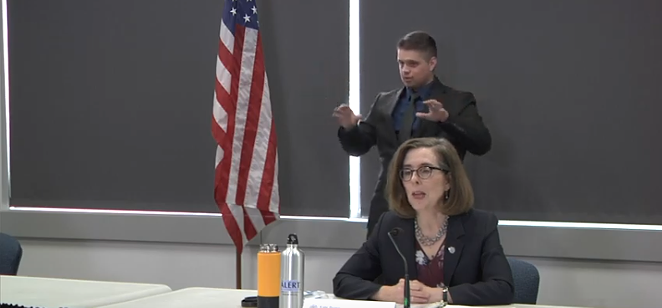on hospitals, surgical centers, medical offices and dental offices—making it possible for most people in those places to head back to work soon.
Brown’s Executive Order on March 18 prohibited non-emergency medical procedures in order to conserve personal protective equipment for health care workers treating COVID-19 patients.

Brown announced Thursday that after May 1, these providers no longer have to delay non-urgent procedures, as long as they can demonstrate they have met the new requirements for COVID-19 safety and preparedness. They'll need to show that they have enough PPE, for one, as well as demonstrating that they can minimize the risk of transmitting novel coronavirus, according to the Governor's office.
“As anyone waiting for an elective surgery knows, ‘non-urgent’ does not mean ‘minor,'” said Gov. Brown. “This is incredibly important medical care that we would not have told providers to delay if the threat of COVID-19 had not made it necessary.”
Last week, Rep. Cheri Helt (R-Bend) sent a letter to Brown asking her to lift the regulations on health care and medical procedures in Central Oregon.
The best place for opening back up is where people are trained to mitigate the risks of the virus. - Rep. Cheri Helt
tweet this
“I recognize that this may not be appropriate for every region of the state, but in communities like Central Oregon, it is possible to restore access to hospitals and surgery centers so patients can receive procedures they need and medical professionals can begin to get back to caring and healing their patients,” Helt wrote.
The health care industry and medical professionals are enduring some of the worst economic damage as a result of efforts to combat COVID-19, Helt said.
“The best place for opening back up is where people are trained to mitigate the risks of the virus,” Helt told the Source. “Some of the procedures considered ‘elective’ include gallbladder surgeries and spinal surgeries, so we have people lying in bed in Bend on opioids just waiting [until Gov. Brown lifts the restrictions.]”
Today, Helt released a statement thanking Brown for allowing non-emergency medical procedures to begin again in Oregon.
"As we move forward, it is important that we responsibly manage our PPE supplies and have timely and robust testing for COVID-19,” Helt said. “We must trust and rely on the expertise of our doctors, nurses, scientists and other frontline workers, and return the autonomy of practicing medicine and providing health care to those in the medical field.”
Brown's order stipulates that for now, hospitals will be able to resume up to 50% of their pre-pandemic business and will be required to prioritize cases based on urgency, according to a press release from St. Charles Health System. Some surgeries that require critical resources will continue to be postponed.
"...This is welcome news—it’s good for our patients who have been patiently waiting for the care they need, and it’s good for our organization, which will start to see some of its revenue return,” said Dr. Jeff Absalon, chief physician executive for SCHS.
Jennifer Welander, chief financial officer for SCHS, said since March 2, the health system’s revenue has declined by 41%, mostly due to fewer surgeries as well as a decline in patients coming into the Emergency Departments and outpatient clinics.
Absalon said the situation at the hospital and in the community could change quickly.
“If we let up on social distancing as a community too quickly, we absolutely do anticipate the potential for a second surge,” he said. “So, everything we do will have to be thoughtful and staged in such a way that we are able to keep our eye on this. It’s a dynamic process that will be adjusted based on what the prevalence of disease tells us.”






















